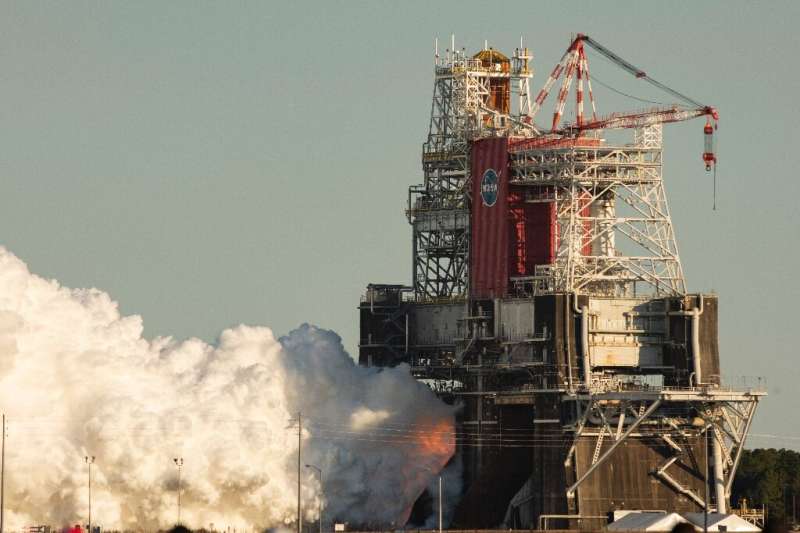NASA released a statement following that test that said "no major repairs" were required after the engines were cut just one minute into the eight-minute run, but did not detail what went wrong.
Thursday's test should also last eight minutes, and is intended to provide data that will help minimize risk on the lunar missions.
The rocket's tanks were filled with 700,000 gallons (2.6 million liters) of cryogenic propellant, which will fire the engines, which were repurposed from Space Shuttle missions, including the very last in 2011.
If all goes well, it will take about a month to refurbish the core stage, then it will be transported by barge to the Kennedy Space Center in Florida.
There, it will be assembled with the other parts of the SLS rocket and the Orion crew capsule, which are being prepared for the Artemis I launch later this year—an uncrewed mission.
The SLS program has been beset by delays and cost overruns, and was initially due to be operational in 2016.
Ars Technica reported this week NASA was conducting an internal review of its affordability.
NASA said last August the baseline development cost was $9.1 billion and the initial ground systems capability required $2.4 billion.
It has also been criticized as a "jobs program" for NASA's Marshall Space Flight Center in Alabama, as well as for its key contractors Boeing, Aerojet Rocketdyne and Northrop Grumman.
While SLS is far more powerful than SpaceX's Falcon Heavy rocket used to put satellites in orbit and take crews to the ISS, Elon Musk's company is also working on a prototype rocket called Starship that will be capable of deep space exploration.
Starship's last three test flights have ended in stunning explosions, but analysts believe the mishaps could paradoxically be accelerating the spaceship's development, eventually making it a viable alternative to SLS.
© 2021 AFP



